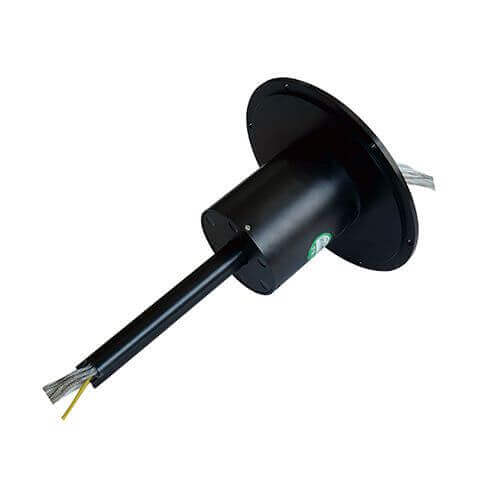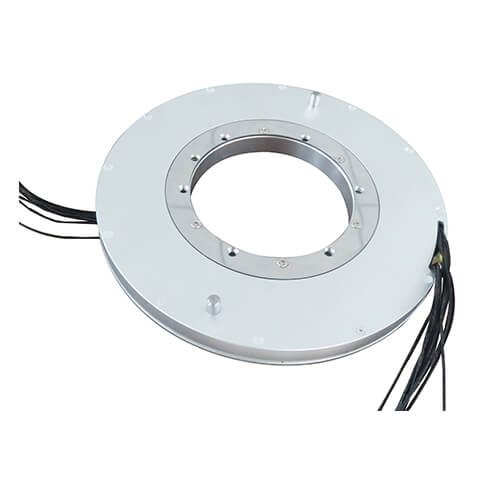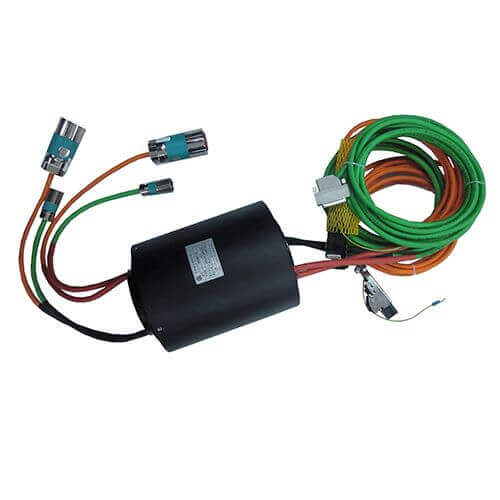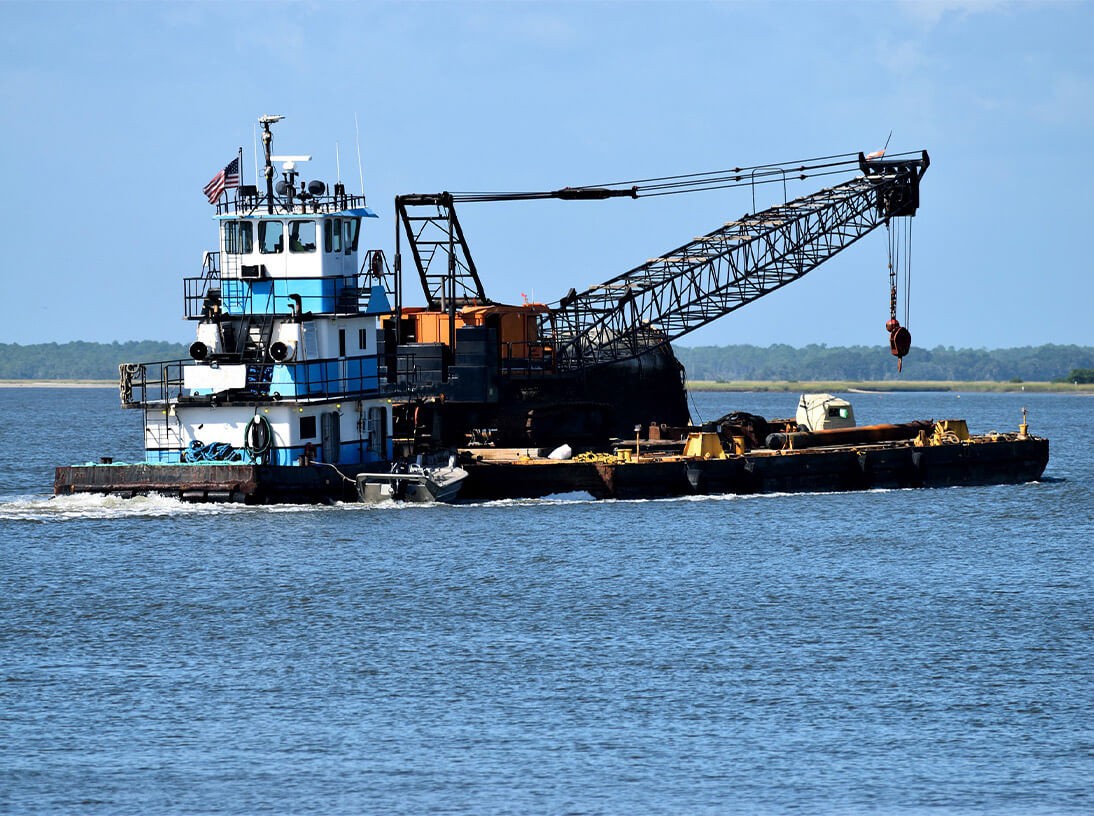Marine vehicles, with their varied forms and functions, incorporate several moving parts that necessitate the transfer of power and signals from stationary to rotating components. This is where slip rings, also known as rotary electrical interfaces, rotating electrical connectors, or electrical rotary joints, play a critical role. At their most basic, slip rings function as electrical conduits capable of simultaneous transmission of data and power signals.
Their design allows for continuous rotation – think of a radar antenna on a ship making endless revolutions, or a submarine’s propeller, that needs power delivery through a rotational link. By eliminating the need for wires that could tangle and hamper movement, slip rings offer an elegant and efficient solution to a complex problem.
Marine vehicles present unique challenges for slip rings due to harsh environmental conditions, including saltwater exposure, which can lead to corrosion. Slip rings in marine applications are specifically designed to meet these challenges, offering important features such as corrosion resistance and waterproofing.
In the grand scheme of marine vehicle design and function, while slip rings may not immediately come to the fore, their importance cannot be underestimated. They are the silent workhorses, ensuring smooth communication, operational efficiency, and a reduction in downtime due to component failure.
This article aims to paint a comprehensive picture of the role of slip ring application in marine vehicles. It seeks to provide users and enthusiasts with an understanding of different types of slip rings, and their applications in various types of marine vehicles, and highlight their contribution to performance improvement and efficiency. Also, it will address some common challenges associated with the use of slip rings in marine vehicles and provide some insights into their future evolution.
Importance of Slip Rings Application in Marine Vehicles
Despite their relatively modest size and unassuming appearance, slip rings shoulder immense responsibility within the marine vehicles where they’re found. Adjacent to their physical size, their role is truly colossal. They act as the key link between stationary structures and moving parts in these vehicles. Their primary task is to transmit electrical power and data signals, allowing these two diverse sections of the vehicle to communicate and perform in harmony, irrespective of the rotational motion.
Imagine the high-tech radar system aboard a surface ship. This device (rotating continually to monitor surroundings), relays crucial data to the stationary computer systems within the ship. This ceaseless transmission is enabled by slip rings. In submarines, torpedoes are controlled via commands passed through slip rings, ensuring they reach target destinations. Clearly, the transmission of critical power and data would be impeded, if not impossible, without the presence of slip rings.
The benefits of slip rings in marine vehicles are truly manifold. One of the immediate advantages is the enhancement in communication, facilitated by the continuous, uninterrupted transmission of data. This boosts the efficiency and effectiveness of the vehicle’s operations, significantly reducing delays and potential machine hiccups.
Increased operational efficiency also translates into cost-effectiveness in the long run. By ensuring that moving parts can rotate freely without tangling wires, slip rings reduce wear and tear, minimize the risk of damage, and extend the lifespan of the entire vehicle system. This durability not only prevents frequent replacement, but also reduces maintenance-related downtimes, providing users with an economical, high-performing, and reliable solution.
In the complex world of marine vehicles, therefore, slip rings are not just components; they are silent, crucial enablers intertwined with the seamless performance of these machines. Whether it’s delivering critical data or power, their role is indispensable in ushering in operational efficiency and longevity.

Types of Slip Rings Used in Marine Vehicles
As diverse as marine vehicles are, so are the types of slip rings used within them. As critical connectors facilitate communication between stationary and rotating parts, no ‘one-size-fits-all’ slip ring exists. Each type is designed to cater to specific requirements and overcome unique challenges posed by varying marine environments.
To begin with, we have the Standard Slip Rings. These usually come with a rugged design, ideal for general applications in many types of marine vehicles. Characterized by their simple design and low cost, they offer high mechanical stability and are suitable for transmitting various signals.
Next up are the capsule slip rings, often found in compact systems within marine vehicles. These are designed for smaller devices that require rotation, such as robotic arms in undersea rovers. Their small size and lightweight construction make them perfect for applications with limited installation space.

The pancake slip rings, as the name suggests, feature a disc-like, flat design. Specifically crafted for marine vehicles where length is a constraint but the diameter isn’t – think radar systems on ships where rotation is key, and they need to fit into compact vertical spaces.

In marine vehicles, nothing can compromise the waterproof feature, and hence we have waterproof slip rings. Whether it’s surface ships exposed to waves and weather, or submarines exploring ocean depths, waterproof slip rings deliver reliable performance even in the harshest, most waterlogged environments. They are meticulously designed to resist corrosion and withstand extensive variations in pressure and temperatures.

Each type of slip ring is strategically designed to meet marine application requirements and facilitate the flawless performance of various vehicle systems. Different as they might be in their form, all slip rings share a common purpose: to ensure uninterrupted transmission of power and signals between stationary and rotating components. These variants, with their unique capabilities, reflect the profound knowledge and application-specific focus of professionals in this field. In the ocean of marine technology, slip rings truly serve as dependable anchors.
Applications of Slip Rings in Different Marine Vehicles
Slip rings find ubiquitous use across diverse marine vehicles due to their capacity to ensure seamless power supply and data transfer between stationary and rotating components. This integral role they play permeates different classes of marine vehicles, providing practical solutions to complex operational necessities. Here are a few examples of their application in various types of marine vehicles:
- Submarines: Deep beneath the ocean’s surface where reliability is paramount, slip rings are entrusted with significant responsibilities. They become an essential part of the control systems for torpedoes, allowing for the accurate launch and path control of these weapons. This is achieved by transmitting necessary power and control signals through the rotating torpedo tubes to the stationary control systems within the submarine. Furthermore, slip rings are also routinely tasked with powering communication devices and other submarine systems that need constant rotation.
- Undersea Rovers: Undersea exploration employs remotely operated vehicles (ROVs) or autonomous underwater vehicles (AUVs) to traverse the ocean depths. This often entails constant rotation of cameras and scientific tools to capture a full view of the underwater environment. Dual-channel capsule slip rings are commonly employed in these rovers. By transmitting power and data between the rotating camera or tool system and the stationary control system within the rover, they allow for uninterrupted undersea exploration.
- Surface Ships: From commercial vessels to military crafts, surface ships host an array of rotating systems. One of the main applications of slip rings here lies within radar systems. With pancake-style slip rings, these radar units can constantly rotate to keep a constant watch on potential threats or objects and deliver a unified picture to the ship’s stationary control systems. Waterproof slip rings, designed to withstand the harsh marine environment, also aid deck machinery or any equipment exposed to the elements, ensuring smooth operations.
To sum up, the role of slip rings is inherently multifaceted, reflecting the diverse range of applications they cater to in different types of marine vehicles. Each application demonstrates the practical benefits of slip rings in maritime technology, further underlining the essential part they play in enhancing the functionality of marine vehicles.
Slip Rings Application in Marine Vehicles: Challenges and Solutions
In spite of the vital role slip rings play in marine vehicles, their continuous exposure to harsh marine conditions does present various challenges. However, these challenges, ranging from the corrosive nature of seawater, and variable temperature and pressure conditions to constant mechanical wear and tear, can be met and overcome through thoughtful design choices and regular maintenance.
- Corrosion: Constant exposure to seawater instigates corrosion, which can degrade the performance of slip rings over time. To combat this, manufacturers often use materials such as stainless steel or apply anti-corrosive coatings. Waterproof slip rings, designed particularly for marine applications, feature sealed housings to resist both water ingress and corrosion.
- Pressure & Temperature Variations: Marine vehicles, especially submarines and undersea rovers, operate in environments with significant pressure and temperature changes. When designing slip rings for these environments, engineers consider these variables and use materials that can sustain these changes without compromising performance.
- Wear and Tear: Due to their function, slip rings are constantly subject to mechanical wear and tear. Advanced manufacturing techniques aim to lessen this impact, and the use of high-quality, durable materials in construction can significantly prolong a slip ring’s lifespan.
Maintenance is equally important to ensure optimum slip ring function. Regular lubrication, inspections for wear and tear, periodic cleaning, and timely replacement of worn-out parts are some of the essential steps to a well-maintained slip ring.
Here are some important, user-friendly tips for troubleshooting and maintaining a typical maintenance schedule:
- Regular Inspections: Make routine checks for any signs of wear, corrosion, or abnormally high temperature as part of your maintenance routine.
- Clean Contact Surfaces: Keeping the contact surfaces clean ensures smooth movement and reduces potential signal interference.
- Lubricate: Just as with any moving mechanical part, slip rings require regular lubrication.
- Ensure Correct Alignment: This prevents uneven wear and can significantly extend the lifespan of the slip ring.
In conclusion, while challenges are inherent in using slip rings within marine vehicles, advances in design and a sound maintenance routine can ensure that these crucial components continue to perform efficiently, thereby maintaining the operational reliability of the vehicle as a whole.
Slip Rings Application in Marine Vehicles: Future Trends
The marine vehicle slip ring industry is continually evolving to keep up with advances in technology, design, and materials. In the future, we can expect several significant trends shaping this crucial component’s landscape:
- Advanced Materials and Manufacturing Processes: As researchers continue to explore new materials and manufacturing techniques, future slip rings will likely incorporate these innovations. Expect even lighter, more corrosion-resistant materials and advanced fabrication methods to create more compact and efficient slip rings that withstand harsh marine environments with minimal wear and tear.
- Smart Diagnostic Systems: A significant aspect of slip ring technology is improving the ability to detect potential issues at their early stages and prevent complete system failures. Smart diagnostic systems will monitor various real-time performance parameters, allowing users to stay ahead of potential problems with predictive maintenance. These systems may also enable remote monitoring and diagnosis, further simplifying the slip ring condition assessment process.
- Enhanced Electrical and Data Transfer Capabilities: As marine vehicles incorporate increasingly advanced communication, control, and power systems, slip rings must evolve accordingly. Future slip rings will have the ability to transmit higher electrical currents and support a more comprehensive range of data transmission protocols, fostering seamless integration with cutting-edge technology.
- Customization and Modular Designs: As marine vehicles become more specialized and diverse, there will be a greater emphasis on customization and modularity in slip ring design. Tailor-made slip rings catering to specific operating requirements and environments will gain traction, providing users with the exact solutions they need. Modular designs will enable easier maintenance and parts replacement without overhauling the entire slip ring system.
- Sustainable, Eco-friendly Solutions: The push for sustainable and environmentally friendly technologies will also extend to slip rings in marine vehicles. This may result in eco-friendly manufacturing processes that reduce energy consumption or minimize hazardous waste, as well as the use of materials with a smaller environmental footprint.
In summary, the future of marine vehicle slip rings is set to be shaped by intertwining threads of technological innovation, environmental responsibility, and an overarching focus on efficiency and adaptability. These future trends explicitly address the industry’s direction, marking the path for constant progress and seamless integration with emerging maritime technologies.
Conclusion
Slip rings contribute immensely to the field of marine vehicles, offering numerous benefits and enhancing their performance. Their importance will only increase as the industry continues to develop. As experts in designing and manufacturing slip rings, our commitment to innovation and continuous improvement ensures the best performance and solutions for marine vehicle applications.
FAQs about Slip Rings Application in Marine Vehicles
To better address the common queries and concerns regarding the usage, maintenance, and potential issues associated with slip rings in marine vehicles, we’ve compiled a list of frequently asked questions:
Q1: What factors should be considered when selecting a slip ring for marine vehicles?
A: Several factors come into play when selecting a slip ring for marine applications. These include:
- The type of marine vehicle and specific application.
- Space constraints and installation requirements.
- Rotation speed, electrical, and data transmission needs.
- Environmental conditions, such as exposure to seawater, pressure, and temperature.
Q2: How often should slip rings be inspected and maintained in marine vehicles?
A: Regular maintenance and inspection are crucial to ensuring smooth slip ring operation. While the frequency varies depending on the slip ring type and application, a general rule of thumb is to perform inspections every 3-6 months, or in line with manufacturer recommendations.
Q3: What are the warning signs indicating slip ring wear or failure?
A: Some common warning signs of wear or failure include:
- Intermittent data or power transmission.
- Unusual noises or vibrations during the operation.
- Abnormal increase in operating temperature.
- Visible signs of corrosion or wear.
Q4: Can I replace a slip ring with a non-standard one if the original manufacturer’s model is no longer available?
A: Yes, it’s possible to replace a slip ring with a non-standard model. However, it’s crucial to ensure that the replacement meets the same specifications and requirements as the original. Consult a slip ring expert or the vehicle’s manufacturer to ensure compatibility.
Q5: In case of a malfunction, can slip rings be repaired, or do they have to be replaced?
A: The feasibility of repairing a malfunctioning slip ring depends on the extent of the damage. In some cases, simple maintenance tasks such as cleaning, lubricating or tightening connections can address common issues. For more severe problems or extensive wear, replacement may be necessary.
Q6: How can I safeguard the slip rings’ long-term performance under harsh marine conditions?
A: Ensuring continued performance of slip rings in marine vehicle applications involves:
- Selecting a slip ring designed for use in marine conditions, such as waterproof or corrosion-resistant models.
- Implementing a regular maintenance schedule that includes inspection, cleaning, and lubrication.
- Making timely repairs or replacements when necessary.


